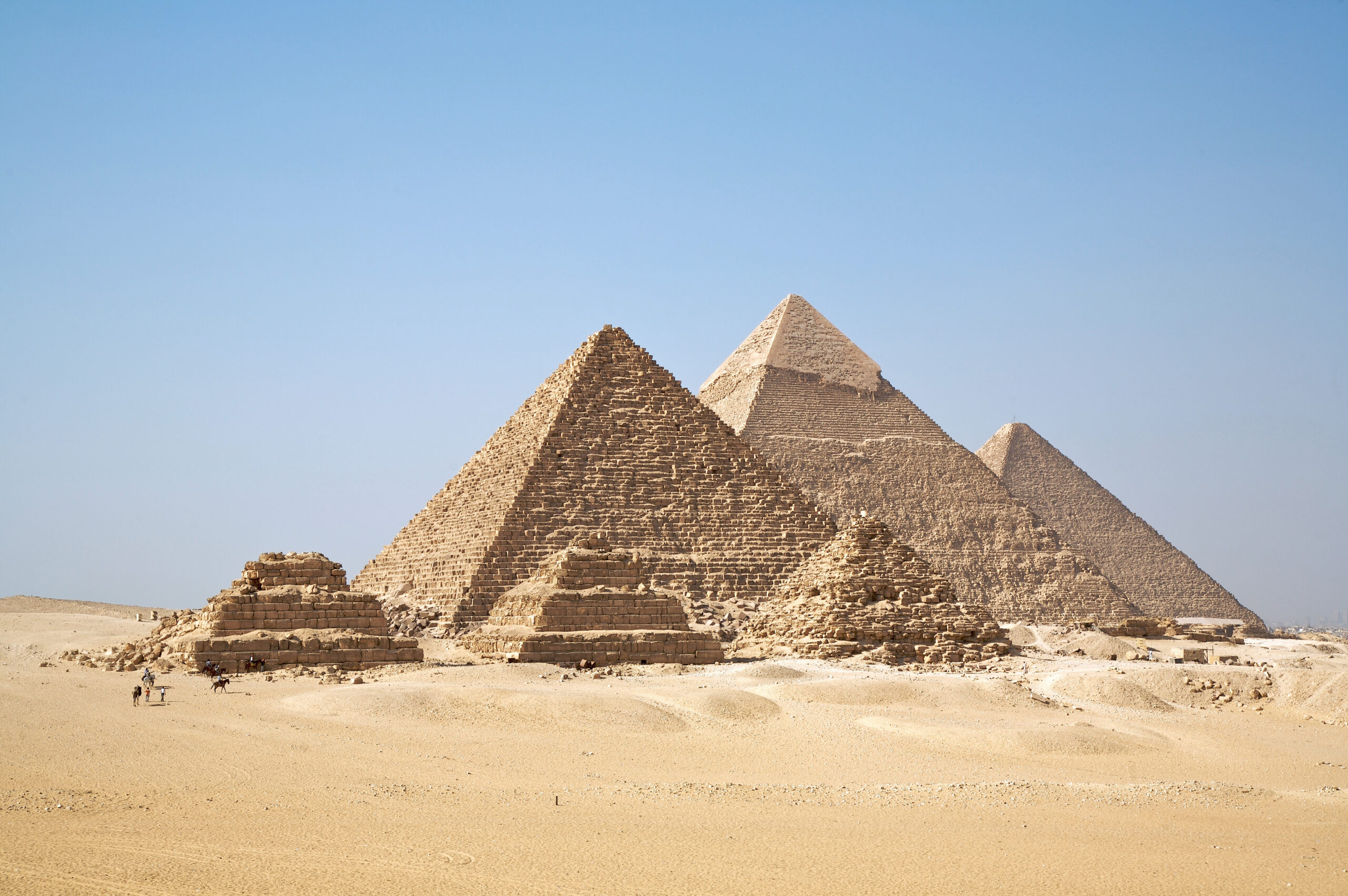The Pyramids of Giza stand as monumental symbols of ancient Egypt’s grandeur and ingenuity, captivating the imagination of people around the world for millennia. Built as tombs for the pharaohs, these awe-inspiring structures are among the most iconic and enduring architectural achievements in human history, reflecting the power, wealth, and religious beliefs of ancient Egyptian civilization.
The pyramids are typically associated with the Old Kingdom period of ancient Egypt, dating back to around 4,500 years ago. During this time, the pharaohs commissioned the construction of elaborate burial complexes, including massive pyramids, to serve as their final resting places and ensure their passage into the afterlife.
The most famous of all the Egyptian pyramids are the Great Pyramids of Giza, located on the outskirts of modern-day Cairo. These monumental structures were built for three successive pharaohs of the Fourth Dynasty: Khufu (also known as Cheops), Khafre (Chephren), and Menkaure (Mycerinus). The Great Pyramid of Khufu is the largest and most iconic of the three, standing over 140 meters (460 feet) tall and consisting of an estimated 2.3 million limestone blocks, each weighing several tons.
The construction of the pyramids required an immense amount of labor and resources, involving thousands of skilled workers, engineers, and architects working over decades or even centuries. Despite the prevailing theories about how the pyramids were constructed, including the use of ramps, levers, and pulleys, the exact methods and techniques remain a subject of debate among historians and archaeologists.
One of the most remarkable aspects of the Egyptian pyramids is their precise alignment with the cardinal points of the compass. The sides of the Great Pyramid of Khufu, for example, are aligned almost perfectly with the four cardinal directions—north, south, east, and west—a testament to the advanced astronomical knowledge and engineering prowess of the ancient Egyptians.
The interior of the pyramids contains a series of chambers and passageways, designed to house the pharaoh’s sarcophagus and funerary goods. The inner chambers are often elaborately decorated with hieroglyphic inscriptions, religious symbols, and scenes from the pharaoh’s journey to the afterlife, providing valuable insights into ancient Egyptian beliefs and customs.
In addition to the Great Pyramids of Giza, there are numerous other pyramids scattered throughout Egypt, spanning different periods of ancient Egyptian history. These include the Step Pyramid of Djoser at Saqqara, the Bent Pyramid and Red Pyramid at Dahshur, and the Pyramid of Amenemhat III at Hawara, among others. Each pyramid has its own unique architectural features and historical significance, offering a glimpse into the evolution of pyramid construction over time.
Today, the Egyptian pyramids continue to inspire wonder and fascination among travelers and scholars alike, drawing millions of visitors from around the world to marvel at their magnificence and explore their mysteries. Despite the passage of millennia, these ancient monuments stand as enduring testaments to the ingenuity, creativity, and enduring legacy of one of the world’s greatest civilizations.



